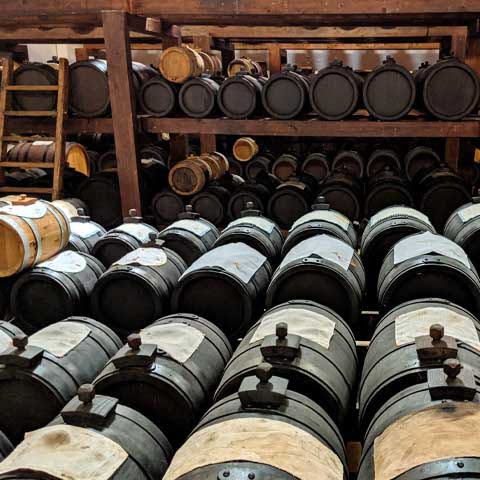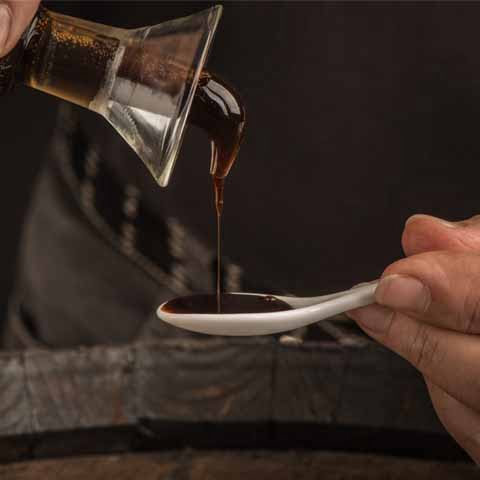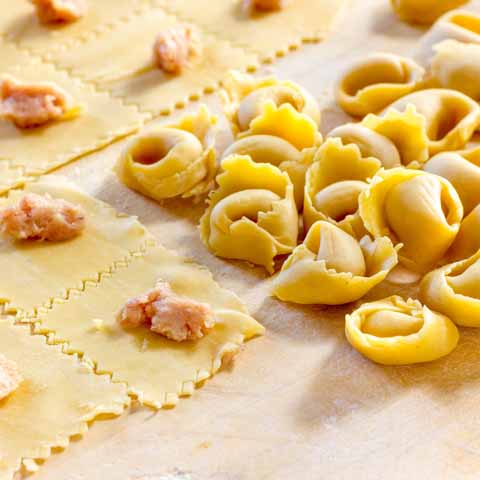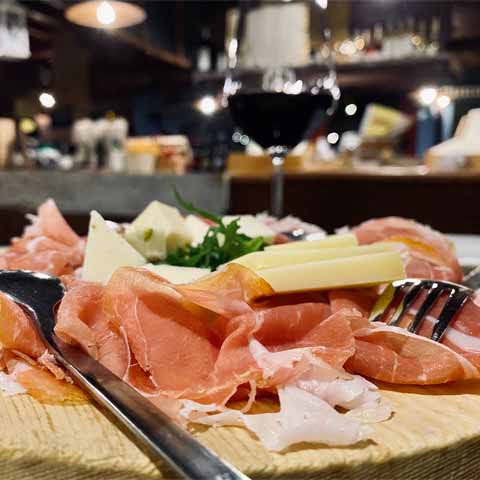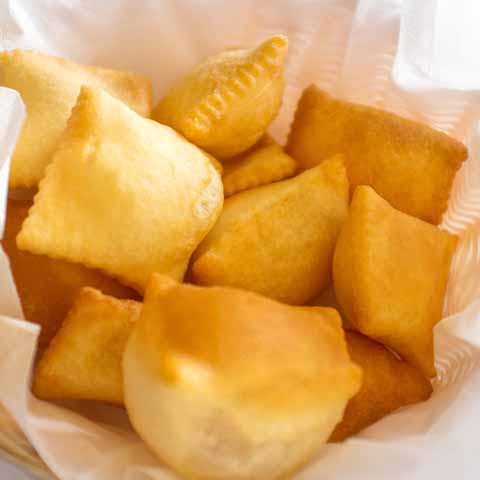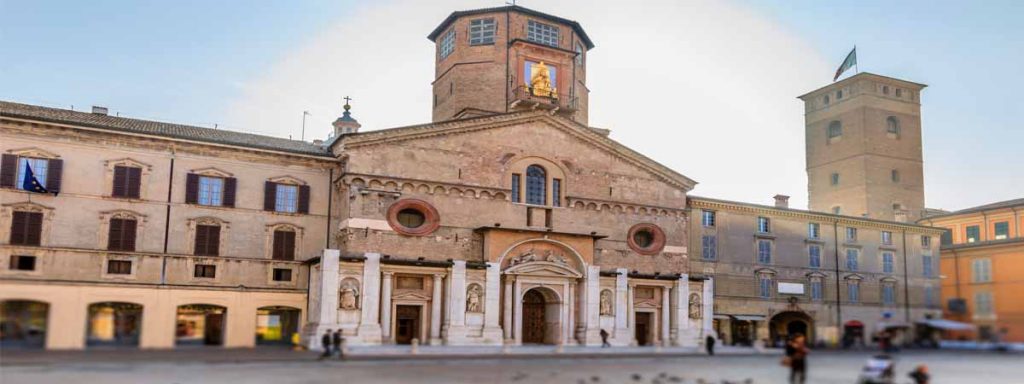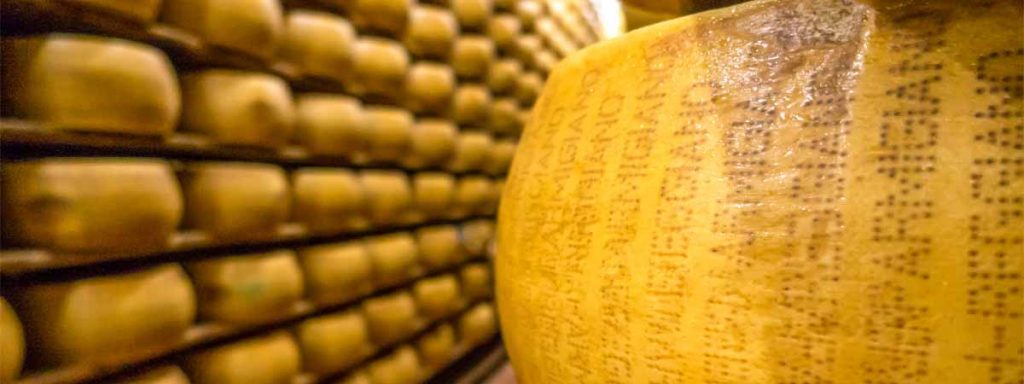Modena is a culinary star in Italy. It features a cuisine that is best described in one word: rich. From the high quality of the ingredients used to create its traditional recipes to the hearty, filling nature of its dishes, Modena personifies Italian culinary excellence.
The province is known worldwide for its wide variety of food products which originate exclusively from the area, making it, together with the rest of the Emilia-Romagna region, the location in Italy with the most foods that have earned the DOP and IGP seals of quality.
Some of the province’s most widely used ingredients include balsamic vinegar – perhaps the product that Modena is most well-known for – and Parmigiano-Reggiano – the king of cheese. Travelers should also expect to find quite a bit of pork meat, particularly cured meats such as prosciutto and sausage, on the menu as well as local pasta such as tortellini and the area’s most famous wine – Lambrusco.
APPETIZER
Throughout Modena, traditional appetizers begin with an assortment of the area’s cured meats and local cheeses.
Modena is known for its production of high-quality prosciutto, which is taken from the thighs of large pigs that are raised and fed specifically to produce the best flavor and most ideal fat content. The prosciutto, called prosciutto crudo (salt-cured ham), is aged in areas such as Modena due to the ideal climate which creates a product unlike any other. Other cured meats commonly enjoyed in Modena include coppa, salame, and pancetta.
Alongside the meats of Modena, travelers will find the world’s most popular cheese – Parmigiano-Reggiano. Earning a DOP quality seal, Parmigiano-Reggiano cheese is made using the traditional recipe from nearly ten centuries ago and is aged from 18 months to over two years. Locals also enjoy pecorino (sheep’s milk cheese) and caprino.
Often, these cured meats and cheeses may be accompanied by local fruits and vegetables, Modena black cherry jam, ciccioli (pressed pork fat), gnocco fritto (fried dough), and round bread known as crescentina.
FIRST COURSE
For the pasta course, a quintessentially Modenese dish is tortellini, small pockets of pasta shaped like rings that are stuffed with cheese and meat. While both Bologna and Modena claim to be the birthplace of tortellini, this pasta shape is certainly an integral part of Emilia-Romagna’s cuisine. In Modena, tortellini can be filled with a variety of local ingredients including pork, beef, cured meats, and Parmigiano-Reggiano cheese. The traditional way to serve tortellini is in capon or beef broth.
A larger version, called tortelloni, is often stuffed with spinach (or swiss chard) and ricotta and served with a sauce made from butter and sage. In other parts of the province, tortelloni may be stuffed with other ingredients, such as chestnuts in the mountains or squash in the plains.
Other handmade pasta commonly found throughout the region are tagliatelle al ragù, lasagne al ragù, and passatelli – a simple dish consisting of long, coiled pasta made from eggs, breadcrumbs, parmesan, nutmeg, and served in broth. Fresh egg pasta like tagliatelle may also be served with mushrooms or with wild boar ragù (mainly in mountainous areas).
Outside of pasta, the first course in Modena also includes soups such as zuppa di spinaci alla modenese made with spinach, eggs, Parmigiano-Reggiano, nutmeg, and toasted bread as well as chelzagatt, a stew of beans and polenta.
SECOND COURSE
For the meat course in Modena, travelers will delight in the abundance of cured meats and sausage the area is known for. Two of Modena’s pork products, which hold the IGP seal, include cotechino – slow cooked sausage made from a variety of pork cuts including skin and fat – and zampone – pig foot stuffed with ground pork meat. Native to Modena, today these specialties are enjoyed throughout Italy during Christmastime and New Year. Both are often served with lentils during the holidays, while in some cases cotechino may be accompanied by stewed beans and potato puree in Modena.
Other meat dishes that are common for the second course are bollito misto (various cuts of meat that are slowly simmered), stewed game with vegetables in flavorful sauces, and cappello da prete – a triangular-shaped cured pork sausage.
SIDES
No meal in Modena is complete without its quintessential balsamic vinegar, the Aceto Balsamico di Modena. Called Balsamic Vinegar of Modena throughout the world, it is a protected food product that can only be produced in Modena. Used as a condiment, sweetener, ingredient, or even sipped on its own, balsamic vinegar has a thick consistency as well as a sweet and acidic flavor profile.
The history of balsamic vinegar goes as far back as Roman times. The recipe and production techniques were passed down from generation to generation. Although balsamic vinegar can be found throughout the world, true Modenese balsamic vinegar is different in its color, flavor, density, and aroma. Modena vinegar is aged for decades – often 12 to 25 years – which produces a deeper flavor and a thicker product.
Other traditional products that are served alongside meals in Modena are cured pork products such as the aforementioned ciccoli, pesto modenese (also called cunza, this is a spread made from lard, rosemary, and garlic), and borlenghi (very thin, pliable bread made from flour, water, milk, and eggs). Borlenghi are served stuffed with lard and Parmigiano-Reggiano cheese and folded into four parts.
STREET FOOD
When walking the streets of Modena, travelers can stop at small street-side cafés to enjoy handmade tortellini in a flavorful beef broth served in a to-go cup. Another great local specialty is sandwiches made with the area’s cured meats and cheeses on traditional round bread called crescentine (made from flour, olive oil, milk, and yeast).
The other key street food in Modena is gnocco fritto, which is a type of fried dough. These decadent dough squares are often stuffed with the area’s most delicious cured meats and cheeses.
DESSERTS
Traditional desserts throughout Modena often highlight local ingredients.
A local specialty, confettura di amarene brusche (black cherry jam), is commonly served in pies and tarts. Made from fresh, local cherries, it is known for its bittersweet flavor. The term used by locals to describe it is brusco, meaning “sharp.”
Popular dishes for the dessert course include torta barozzi – a delicious cake made of eggs, coffee, cocoa, dark chocolate, rum, and almonds, bensone – a dense cake reminiscent of sweetened bread that is sliced and often dunked in Lambrusco wine, frappe – thin, fried dough dusted in powdered sugar, and torta di tagliatelle – pastry filled with pasta and amaretti.
WINES
By far, the most popular wine variety in Modena is its traditional Lambrusco wine. Known for its light quality, it is the perfect pairing with the area’s rich, hearty cuisine. The taste of this sparkling wine can range from semi-dry to slightly sweet depending on the level of sugar present. Lambrusco di Modena has earned the DOC quality seal and is produced using grapes of the same name from nearby fertile plains. There are three varieties – Sorbara, Santa Croce, and Grasparossa of Castelvetro, the most popular of which is the Sorbara variety. Lambrusco wine is among the most commonly sold Italian wines in the world. Though the wine is typically red, rosé Lambrusco is produced as well, specifically as the Sorbara and Grasparossa di Castelvetro varieties.
Other DOC wines produced in the province of Modena include Trebbiano and Pignoletto.
When it comes to food and wine, Modena does not disappoint. Serving up the best of Emilia-Romagna’s cuisine, such as tagliatelle and tortellini, combined with specialties native to the area, such as cotechino and zampone, the city of Modena is a coveted gastronomical paradise.
Travel Guides
The Emilia Romagna Region of Italy
The Cities of Emilia Romagna, Italy

